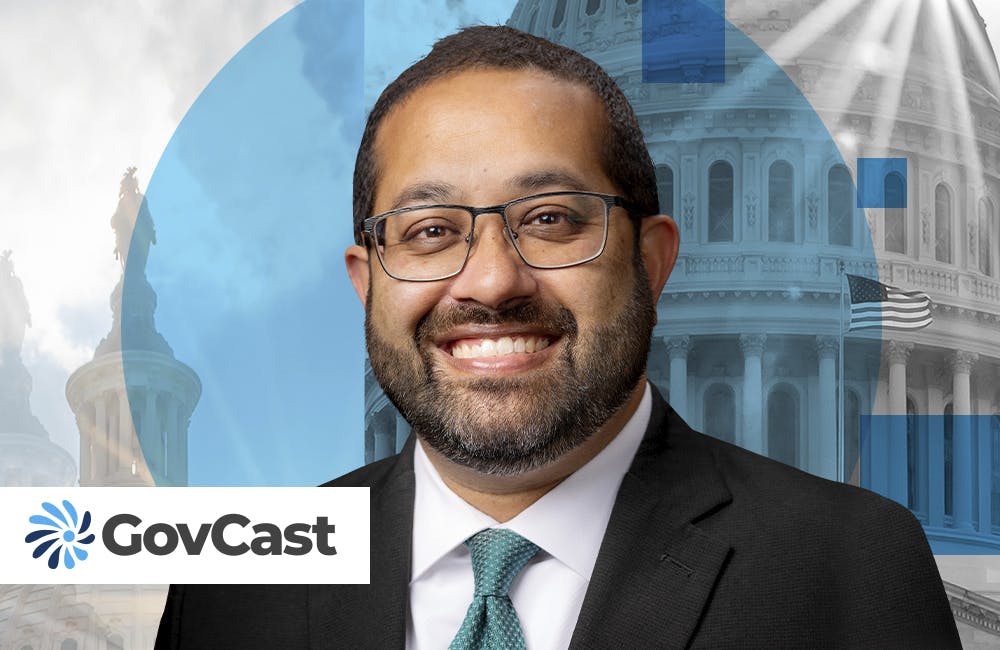FCC Uses COVID-19 Emergency Funds for Telehealth in Low-Income Areas
The agency aims to support shorter- and longer-term efforts to expand telehealth with Congress’ $200M COVID-19 funding.

The Federal Communications Commission said last week that it will use $200 million of COVID-19 funding from Congress to provide telehealth resources in low-income communities that lack connected care resources.
The temporary funding, however, is an alarm for lawmakers to support broadband and connective resources as a standard utility that all Americans should have access too, Federal Communications Commissioner Jessica Rosenworcel said during a Wednesday Brookings Institution webinar.
The FCC’s COVID-19 Telehealth Program, otherwise known as “Promoting Telehealth for Low-Income Consumers,” provides grants to medical providers in low-income areas, rural and non-rural, that lack telemedicine resources.
The program only funds monitoring devices that are themselves connected and will only grant up to $1 million per eligible health care provider, but providing these resources will reinforce social distancing advisories while enabling continued and expanded care, Rosenworcel said.
“It’s not just for patients with COVID-19,” Rosenworcel said of the program. “It’s for patients who might be in a rural area who might have to drive in for a regular test of their diabetes or to a pregnancy checkup. They might be able to do these kind of things remotely and, in the process, not expose themselves to this virus.”
Despite the emergency funding, Rosenworcel also stressed that the COVID-19 pandemic brought to the forefront a digital divide for telehealth and broadband access in America that preexisted COVID-19.
“We’re going to be able to offer these funds to lots of different places in the country, and I hope we don’t just offer them. I hope we learn from them because if we learn that telemedicine works for certain types of elements and works for certain types of folks in different parts of the country and that it offers opportunities in rural America that might be unique or hospitals are closing— let’s figure out how, when we get to the other side of this crisis, we’re going to continue to do those very same things going on.”
FCC also said it will promote long-term telehealth with a three-year Connective Care Pilot Program, which will make $100 million available over three years to examine how the FCC’s Universal Service Fund can support connected care services, especially for lower-income Americans and veterans.
“We expect that the pilot program will benefit many low-income and veteran patients who are responding to a wide variety of health challenges such as diabetes management, opioid dependency, high-risk pregnancies, pediatric heart disease, mental health conditions and cancer,” the FCC said.
The pilot program will provide data that will help the agency better understand how USF funds can support health care providers and patients who use connected care services, as well as how the FCC can strategize connected care services to improve health outcomes and reduce health care costs.
The agency expects the collected data and information could have an “ancillary benefit of aiding policy makers and legislators in the consideration of broader reforms — such as statutory changes or updates to rules administered by other agencies — that could support this trend toward connected care.”
The FCC cited the Veterans Health Agency’s telehealth expansion efforts as evidence to support increased national access to telehealth. VHA had a three-year remote patient monitoring program that involved 43,000 veterans with various conditions — physical, mental, short-term and chronic — which “resulted in a 25% reduction in days of inpatient care and a 19% reduction in hospital admissions.”
The VHA remote patient monitoring program also yielded significant cost-savings, costing the agency $1,600 per patient compared to more than $13,000 per patient for VHA’s home-based primary services. The FCC said that given the U.S. spends more than $3.5 trillion on health care per year, scaling up telehealth programs like VHA’s to a national level will increase access to care and could bring billions in cost-savings to chronic disease management.
The FCC aims to use its long-term pilot to address three barriers to telehealth deployment and adoption:
- The cost of standing up, implementing and providing connected care services, including the costs of services needed to capture, transmit and store data for connected care services
- The lack of mobile or residential broadband internet access services for patients, since aside from the Veterans Affairs Home Telehealth program, there is no federal agency that currently offers funding to health care providers specifically for patient connectivity in connected care
- Inadequate telecom services — such as lack of routers and wireless capability— to support telehealth in households that already have broadband
On top of the pilot program — which health care providers can apply to participate in either 45 days from the effective date of the pilot or 120 days from the release date of its report and order in the Federal Register — the FCC is looking beyond the nation’s two current main bands of Wi-Fi (five and 2.4 gigahertz) to support six gigahertz, which will enable cheaper and more available broadband.
The six gigahertz band is “adjacent to existing spectrum that’s used for Wi-Fi, which means that devices could be available very fast,” Rosenworcel said. “Because now we’re going to have a really big amount available in this mid-band spectrum, we’re going to see speeds that are near one gigabit with the next Wi-Fi standard. … Wi-Fi democratizes internet access, and the more we can make it available at a super low cost, the more … individuals can get connected to life online.”
This is a carousel with manually rotating slides. Use Next and Previous buttons to navigate or jump to a slide with the slide dots
-

DOD Has a New Cyber Resiliency Assessment Program
Defense officials tout the continuous assessment feature and scalability of the new program amid increased cyber threats.
5m read -

Transitioning Systems for Modern Agency Missions
IT modernization is a constant process necessary for improving customer service, mission delivery and collaboration.
40m watch -

Cyber Resilience and Recovery Amid Evolving Cyber Threats
Data durability is a key aspect of NIST’s cybersecurity framework for public and private organizations.
21m listen -

How Tech Enables Environmental Justice at EPA
The agency wants to eliminate bias and establish new tech standards to reduce greenhouse gas emissions.
39m listen








